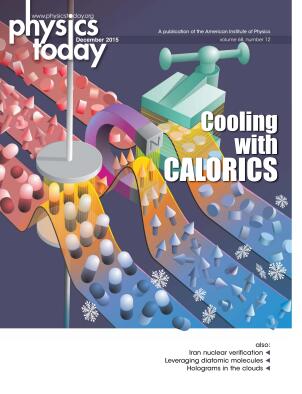Enceladus’s subsurface ocean wraps the moon
DOI: 10.1063/PT.3.3012
A decade ago the Cassini orbiter spotted gas and ice spewing from the south polar region of Saturn’s moon Enceladus. Subsequent investigations revealed that the ice is salty, a result indicating that the ice originated from a liquid ocean between Enceladus’s frozen surface and its silicate core. Now Peter Thomas (Cornell University) and his colleagues have analyzed more than seven years of Cassini surface observations and shown that the ocean is not localized at the polar region of Enceladus; rather, it is global. The figure shows some of the several hundred surface features tracked by the researchers. To first approximation, Enceladus, like our Moon, presents one face to its planet. But because Enceladus is a bit out of round, Saturn torques the satellite and induces a so-called libration, a wobble in the Enceladean hemisphere visible from Saturn. For a localized ocean, the icy surface of Enceladus and its core would be physically connected; the entire mass of the moon would respond to the torque and the libration would be small. A global ocean, on the other hand, would act like a lubricant, so the surface and core slide past each other; only the surface would respond to Saturn’s torquing and the wobble could be relatively big. Thomas and colleagues’ analysis yielded the large libration consistent with a global ocean. Tidal heating can provide the energy to liquefy subsurface ice on Enceladus. But just how tidal heating can maintain the moon’s global ocean remains an unanswered question. (P. C. Thomas et al., Icarus 264, 37, 2016, doi:10.1016/j.icarus.2015.08.037

